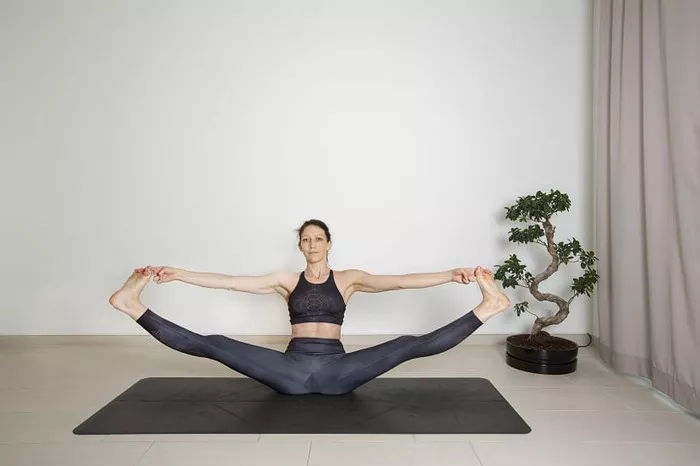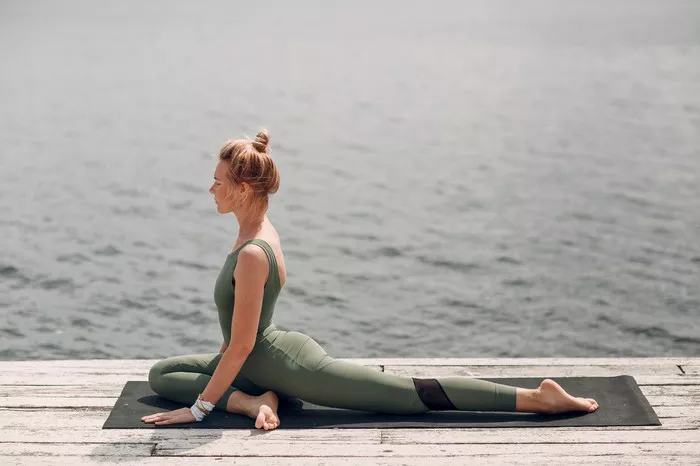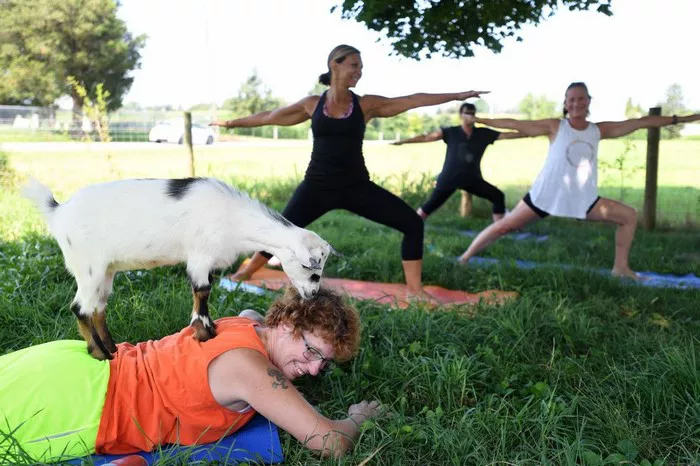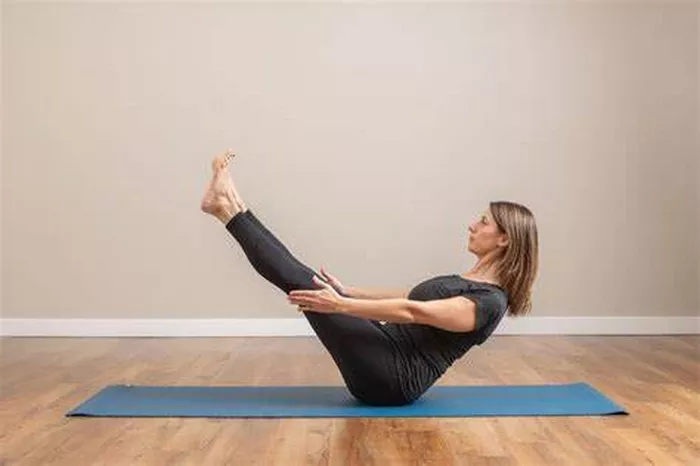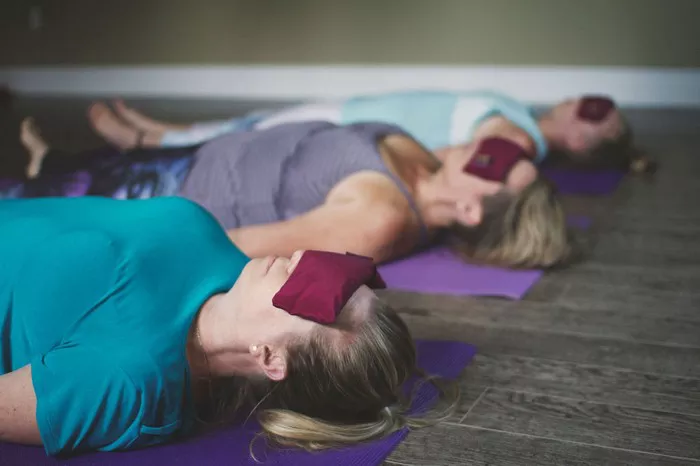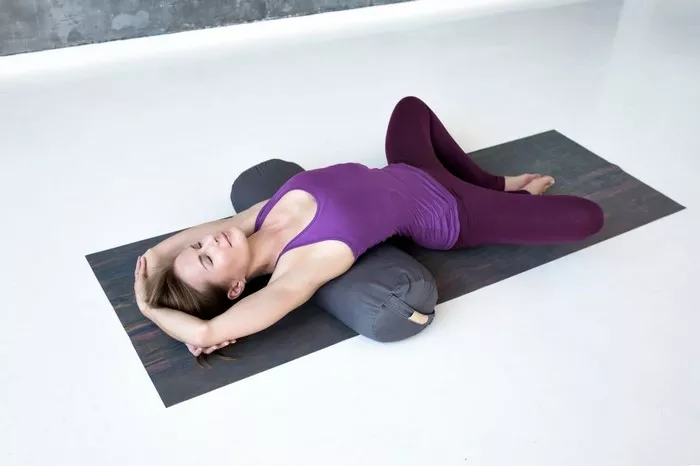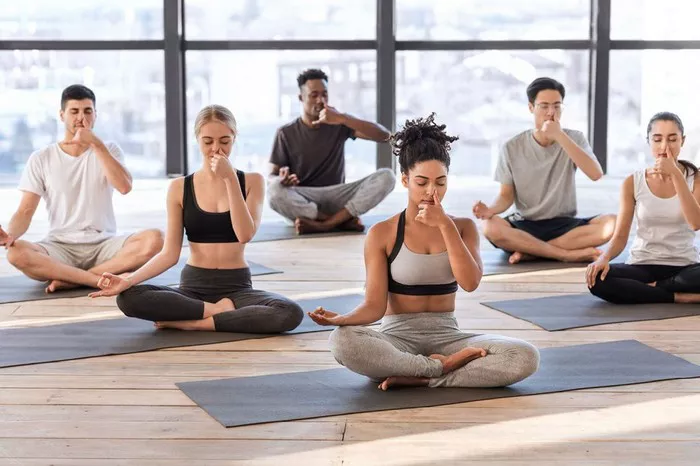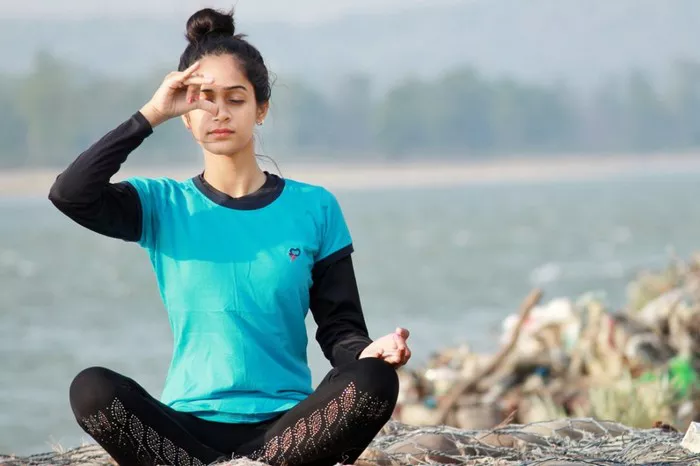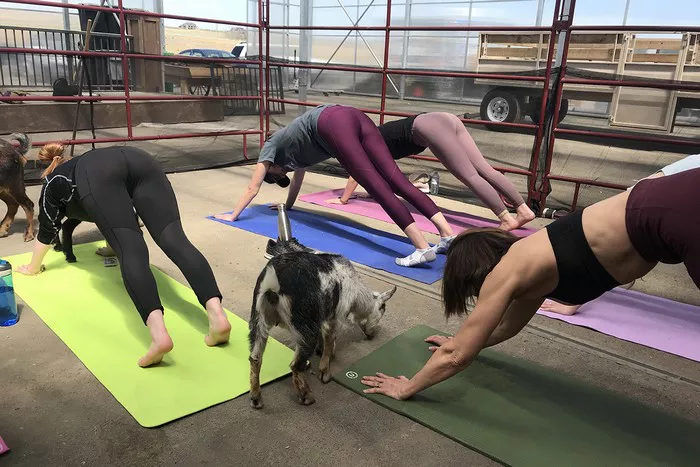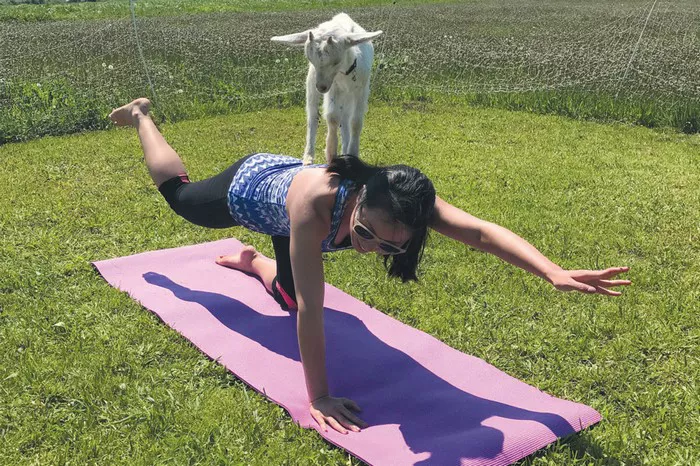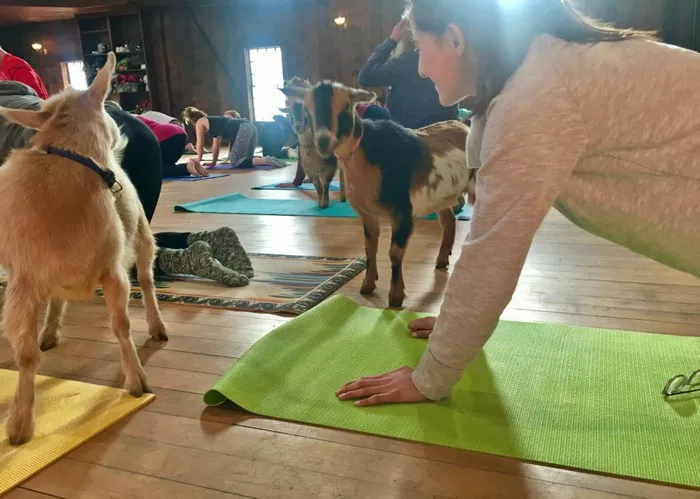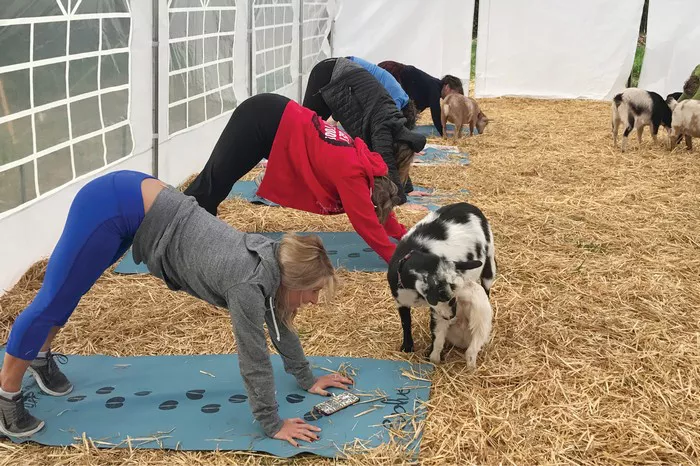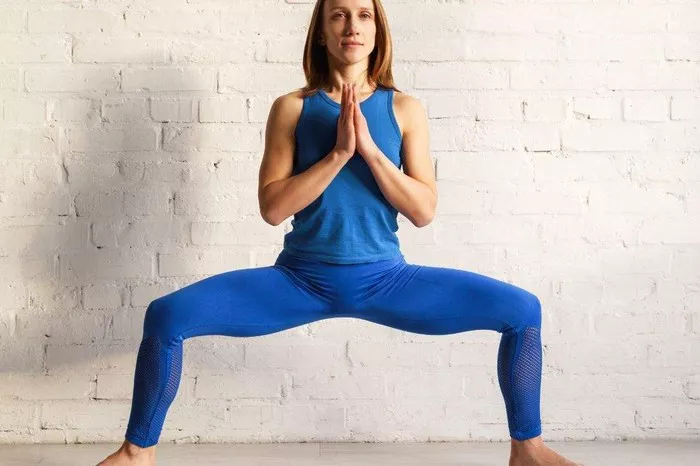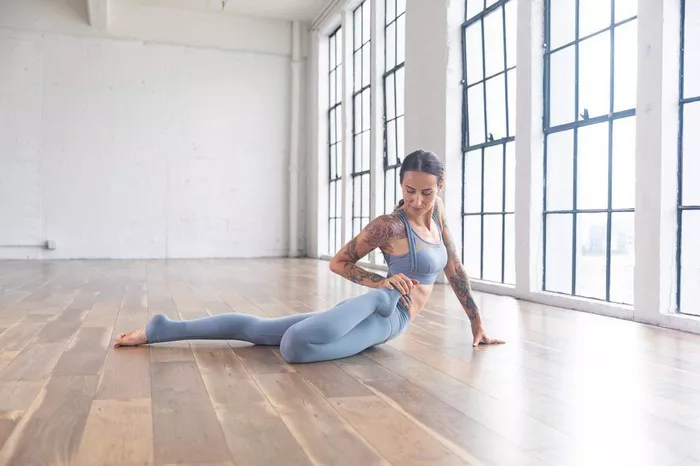The Dancer Pose, also known as Natarajasana in Sanskrit, is a standing backbend that combines balance, flexibility, and strength. It is often practiced in various yoga styles for its graceful appearance and the benefits it offers, such as improved posture, enhanced flexibility, and strengthened legs and core. Despite its many advantages, the Dancer Pose can be challenging and may not be suitable for everyone.
In this article, we will delve into the intricacies of the Dancer Pose, explore its benefits, and highlight the conditions under which certain individuals should refrain from performing it. Whether you are a seasoned practitioner or a beginner, understanding the potential risks and contraindications of this asana is crucial for maintaining a safe and effective yoga practice.
What is Dancer Pose?
Natarajasana, named after the Hindu god Lord Shiva, who is often depicted as Nataraja, the “King of Dance,” is an elegant pose that symbolizes balance, grace, and beauty. It involves standing on one leg while extending the opposite leg backward, holding the foot with the corresponding hand, and lifting the chest in a backbend. The arms extend in different directions, with one arm reaching forward and the other back, forming a posture reminiscent of a dancer in motion.
This asana requires a combination of balance, flexibility, and strength, particularly in the hips, hamstrings, core, and shoulders. The pose encourages openness in the chest and hips while strengthening the legs and improving posture.
Benefits of Dancer Pose
Before delving into who should avoid this pose, let’s briefly look at the benefits of Natarajasana for those who can practice it safely:
Increases Balance and Coordination: As a balancing pose, Natarajasana enhances coordination between the body and mind. The ability to balance on one leg challenges the body’s proprioception, or awareness of its position in space.
Strengthens Leg Muscles: The standing leg must support the body’s weight, which builds strength in the quadriceps, calves, and glutes. The hamstrings of the lifted leg also engage, making the pose excellent for overall leg strength.
Opens the Hips and Chest: The backbend in the pose stretches the hip flexors and opens the chest. It can help counteract the effects of prolonged sitting and improve posture.
Enhances Flexibility: The deep stretch of the quadriceps, hamstrings, and hip flexors increases flexibility in these areas. This is especially beneficial for individuals who spend long hours sitting or who suffer from tight muscles.
Improves Focus and Concentration: Because of the balance involved, this pose requires mental focus and concentration. Practicing it can help improve mindfulness and strengthen mental clarity.
Stimulates the Circulatory System: The backbend aspect of Natarajasana stimulates blood flow to the heart and lungs, promoting cardiovascular health.
Boosts Confidence: As with many challenging yoga poses, mastering Natarajasana can provide a sense of accomplishment and boost self-confidence.
Who Should Avoid Dancer Pose?
While Dancer Pose is beneficial for many, there are specific individuals who should avoid or modify the pose due to health conditions or limitations. These include:
1. Individuals with Knee Injuries
Dancer Pose places significant strain on the knees, particularly the knee of the standing leg. In the pose, the weight of the body is distributed onto one leg, which can exacerbate existing knee pain or injuries. People with conditions such as:
- Knee instability
- Patellar tracking issues
- Ligament injuries (e.g., ACL, MCL injuries)
- Osteoarthritis
should either avoid this posture or practice with caution. Modifying the pose to reduce strain on the knee, such as using props for support or focusing on gentle stretches, can be helpful for those with knee problems.
2. People with Hip Injuries or Hip Replacements
The deep hip flexion and extension involved in Natarajasana can be problematic for individuals with hip injuries or those who have had hip replacement surgery. The action of lifting one leg while maintaining balance on the standing leg may exacerbate discomfort in the hip joint, leading to further injury or strain. Those with conditions like:
- Hip bursitis
- Tendinitis
- Hip fractures
- Prosthetic hips
should consult with a healthcare professional before attempting the pose. A modified version or avoiding the pose altogether may be recommended depending on the severity of the hip issue.
3. People with Back Issues
Although Natarajasana is an excellent stretch for the spine and back, the backbend can put strain on the lower back, particularly for individuals who suffer from chronic back pain or spinal conditions. Individuals with:
- Herniated discs
- Spondylolisthesis
- Sciatica
- Spinal stenosis
should avoid performing the full backbend. The pressure placed on the spine when holding the lifted leg behind can worsen these conditions. It’s advisable for those with back issues to focus on poses that gently open the hips and spine without compromising the integrity of the lower back.
4. Pregnant Women
During pregnancy, certain physical movements and postures should be avoided to protect both the mother and the developing baby. The backbending and balancing aspects of Natarajasana can pose challenges to the body during pregnancy. In the second and third trimesters, as the body undergoes significant changes, balance may be compromised, making poses like Natarajasana potentially dangerous.
Additionally, the deep backbend may place pressure on the abdomen, which can be uncomfortable for pregnant women. It’s recommended that pregnant individuals avoid this pose or seek modifications to practice safely, focusing on poses that support the pelvis and promote overall stability.
5. People with Shoulder Problems
Dancer Pose requires strong engagement of the shoulders, particularly in the arm that reaches forward. For those with shoulder injuries or limited shoulder mobility, this can cause strain or discomfort. Individuals with conditions such as:
- Rotator cuff injuries
- Frozen shoulder
- Shoulder impingement
should approach this pose with caution. If the shoulders are weak or painful, it may be better to avoid raising the arms fully or modify the arm positioning to reduce strain.
6. Individuals with Balance Issues
Since Natarajasana is a balancing pose, it can be difficult for individuals with poor balance or vestibular issues. People who have:
- Vertigo
- Dizziness
- Parkinson’s disease
- Neurological disorders
may struggle with maintaining balance, which could lead to falls and injuries. It’s important for individuals with these conditions to work with a knowledgeable yoga instructor who can provide support and modifications or avoid this pose altogether if necessary.
7. Those with Limited Flexibility
Natarajasana requires a significant amount of flexibility in the legs, particularly in the quadriceps, hamstrings, and hip flexors. Individuals who have limited flexibility in these areas may find it difficult to perform the pose correctly. Overstretching in an attempt to achieve the full expression of the posture can lead to injury.
If flexibility is an issue, it’s advisable to work on improving flexibility in the legs, hips, and spine gradually before attempting the Dancer Pose. Modifications such as using props (like a yoga block) for balance or holding onto a wall or chair for support can also be helpful.
8. Those with Heart Conditions
Since Natarajasana involves a backbend, it can stimulate the heart and circulatory system. However, individuals with heart conditions, such as:
- Hypertension
- Heart disease
- Heart failure
should consult with a healthcare provider before attempting any deep backbends. The pose could increase blood pressure and strain on the heart, particularly in individuals with existing heart conditions. Gentle and restorative yoga practices may be more suitable for people with cardiovascular concerns.
Modifications and Alternatives
For individuals who need to avoid the full expression of Natarajasana, there are several modifications and alternative poses that can provide similar benefits without the associated risks. Here are a few suggestions:
Use a Wall or Chair for Support: Placing your hand on a wall or chair for balance can help reduce the risk of falling while maintaining the stretch and strength benefits of the pose.
Modify the Backbend: Instead of going into a deep backbend, focus on lifting the chest slightly while keeping the spine neutral. This will help avoid unnecessary strain on the back.
Hold the Foot with a Yoga Strap: If reaching the foot with the hand is challenging, use a yoga strap around the foot to create a safer and more controlled stretch.
Practice Tree Pose (Vrksasana): If the balance is difficult, Tree Pose can be a great alternative. It also strengthens the standing leg and improves balance without the backbend.
Perform Standing Poses to Build Strength: If flexibility is an issue, practicing standing poses like Warrior I and II, or Triangle Pose, can help build strength and flexibility in the legs and hips before attempting Dancer Pose.
Conclusion
Dancer Pose is a beautiful and powerful asana that offers a wide range of benefits, including improved balance, strength, flexibility, and posture. However, it is not suitable for everyone. People with certain injuries, conditions, or physical limitations should be cautious when considering this pose. Understanding who should avoid it and why can help practitioners maintain a safe and sustainable yoga practice.
If you have any underlying health concerns, it’s always advisable to consult with a healthcare provider or an experienced yoga instructor before attempting advanced poses like Natarajasana. Modifying the pose or opting for alternative postures can still offer significant benefits without compromising safety. Above all, listen to your body, and practice yoga with mindfulness and awareness to ensure long-term health and wellness.
Related Topics:

